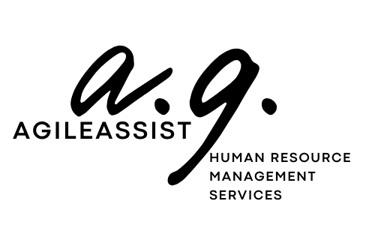Our Daily Stylus ~ Elections in the Philippines: Impact on the Workforce and a Beacon of Hope for the Working Class
As I sat earlier today in one of the precincts serving not only as a polling station but also as a familiar classroom from my elementary days back in 1996, I couldn’t help but notice the same worn-out chairs—scratched, aged, and rocking slightly under the weight of hopeful voters. These chairs are more than just furniture; they are silent witnesses to decades of change, or in some cases, the frustrating lack thereof. In nearly 30 years, while political campaigns have come and gone and leaders have risen and fallen, some socio-economic challenges stubbornly persist. The physical space—frozen in time—reminds me starkly of where the Philippines stands today.
SOCIAL COMMENTARY AND WORKFORCE
CVCII
5/12/20254 min read


...But in the very act of voting,
in the exercise of democracy, there is an undeniable pulse of hope and possibility. Elections in the Philippines are much more than rituals; they are crossroads. They shape not only who wields power but how millions of Filipinos—especially the working class—navigate their daily lives.
The Philippine Electoral Process and Its Influence on the Workforce
Elections in the Philippines, spanning local officials up to the presidency and the Senate, offer the citizens a chance to influence labor policies, social protection, and economic priorities. However, the link between leadership and tangible improvements for the Filipino worker is complex and multifaceted.
Voter Turnout and Public Engagement
The 2025 midterm elections reported a voter turnout of 72%, according to COMELEC, a healthy sign that Filipinos remain engaged and hopeful for accountable governance. This engagement is critical because the next set of leaders will influence policies that affect workers across sectors—from agriculture and manufacturing to services and the burgeoning digital economy.
Current Labor Market Realities in the Post-Pandemic Era
Though there has been some recovery since the pandemic's worst days, the workforce still faces many hurdles:
Unemployment: At 5.1% unemployment in the first quarter of 2025 (Philippine Statistics Authority), the country is making progress compared to the spike during the 2020 lockdowns but remains above the historical average of around 4%. Unemployment is highest among youth and informal sector workers.
Underemployment and Job Quality: Approximately 14.7% of employed Filipinos are underemployed, meaning they work fewer hours than they want or in jobs below their skill level—a persistent challenge exposing gaps in job creation and economic opportunity.
Wages and Inflation: With inflation rising to 6.4% over 2024 and average daily wages climbing only by 2.5%, many workers find their purchasing power eroding, leading to growing concerns about affordability and living standards.
How Leadership Shapes Economic Conditions and Labor Policy
The leaders elected in the Philippines have often faced the tightrope of balancing fiscal responsibility with populist measures—a difficult balancing act that directly impacts the workforce.
Labor Protections: The enforcement of labor laws remains uneven. While recent administrations have pushed policies like the Security of Tenure Bill, aimed at protecting workers from contractualization, actual implementation is inconsistent.
Social Services: The government's conditional cash transfer program, Pantawid Pamilyang Pilipino Program (4Ps), has been a crucial social safety net, but coverage and benefits need scaling to meet rising inflation and unemployment.
Investment and Economic Growth: Stable governance tends to attract investment, but political controversies can undermine investor confidence. In 2024, the Philippines attracted $12 billion in FDI, a promising figure, yet modest compared to regional peers like Vietnam or Indonesia.
Infrastructure and Digital Innovation: The government’s continued investment in infrastructure and digital infrastructure is promising. Initiatives like the Digital Jobs PH program seek to expand online freelancing and remote work capabilities, opening opportunities particularly for young and underemployed Filipinos.
Labor economist Dr. Maria Santos offers a cautionary perspective, noting, “Government policies are a vital lever to improve the quality of employment. Without clear, enforceable laws and a focus on upskilling the workforce, economic growth cannot fully translate into better livelihoods.”
Does the Philippines Have Hope? Economic Outlook and Social Prospects
Despite decades of challenges, signs of optimism abound:
Demographic Dividend: The young and growing population forms a potential powerhouse. By 2030, it’s estimated that nearly 60% of Filipinos will be of working age, presenting immense economic potential if adequately educated and employed.
Resilience of the Informal Sector: Over 35% of the workforce operates in the informal sector. While often overlooked, informal jobs have been lifelines during crises, allowing many to adapt and continue earning during economic downturns.
Digital Economy as a Growth Engine: The information technology and BPO sector employs over 1.3 million Filipinos, with projected annual growth of 7-8% in the next five years, bolstered by government programs encouraging digital literacy.
Community and Civil Society Empowerment: Increasingly, NGOs and grassroots groups are fostering civic engagement, pushing for transparency and better social services.
Overseas Filipino Workers (OFWs): Remittances remain a critical economic pillar, injecting over $40 billion USD annually—even as global uncertainties prompt calls to improve domestic job creation to reduce dependence on migration.
Navigating Today’s Leadership and Planning for the Future
While systemic problems may seem entrenched—much like those old chairs that creak under the weight of continuity—the Filipino worker is not powerless. Here are practical ways for the working class to engage with the evolving political and economic landscape:
Stay Informed and Vote Thoughtfully: Participate in elections not just as a ritual, but as a deliberate choice for leaders who prioritize labor welfare, transparency, and inclusive growth.
Engage in Community and Labor Groups: Collective action through unions or cooperatives can be a powerful platform for negotiating wages, benefits, and protections.
Develop New Skills Continuously: The future job market favors adaptability. Free or low-cost online courses in digital skills, languages, and technical training are increasingly accessible.
Support and Use Technology Wisely: Explore freelance, digital, or remote work options that can supplement income and build career resilience.
Advocate for Accountability: Use social media and community spaces to hold leaders accountable for campaign promises regarding labor and economic policies.
Practice Financial Resiliency: Build small savings, seek government financial literacy programs, and carefully plan household budgets in the face of inflation.
Final Reflection: Hope in the Midst of Familiar Surroundings
As I left that precinct-classroom today, the worn chairs still creaking softly, I felt both the weight of the past and a cautious optimism for the future. True, physical infrastructure like school furniture may change slowly, but the spirit of the Filipino people—persistent, hopeful, and hardworking—continues to push for better days.
The Philippines’ trajectory is not predetermined. It depends on the collective action of voters, workers, leaders, and the global environment. The working class has demonstrated resilience in the toughest times, and with strategic political engagement and skill adaptation, they can shape a more inclusive, prosperous future.
In the end, yes—the Philippines has hope. It is found not only in elections or economic data but, more importantly, in the everyday courage of its people. The challenge is making those decades-old classrooms into classrooms of opportunity—where every Filipino worker can sit
Let's talk
careers@agileasssisthr.com


